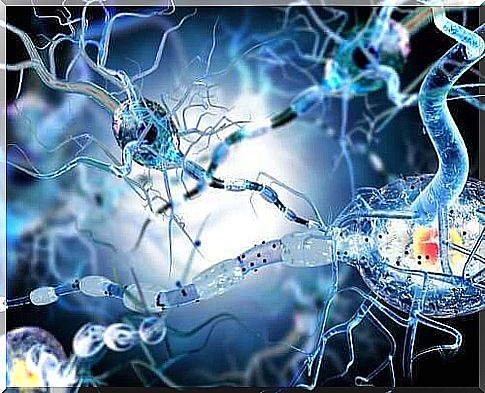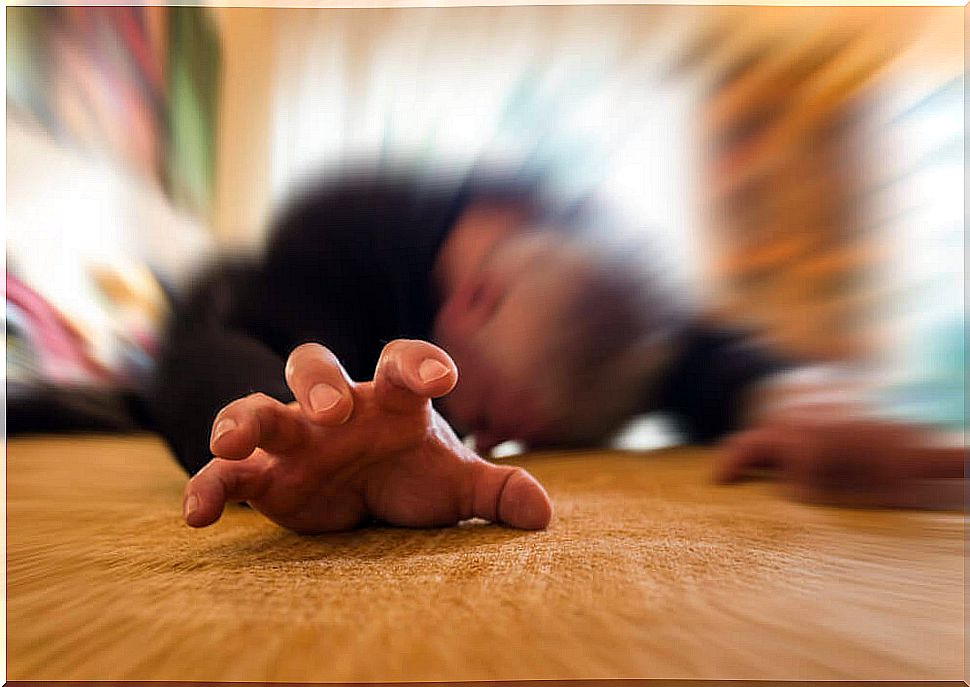Epileptic Seizure: What To Do?
An epileptic crisis requires first aid, especially if it is a serious unconscious attack. The affected person must be protected from injury and it is also important to open the airway if necessary. Then learn more about this topic.

Epilepsy is a neurological disease in which groups of nerve cells discharge synchronously, causing an epileptic seizure . This occurs unexpectedly and suddenly and usually lasts only a few seconds or a few minutes.
The affected person may lose consciousness during the seizure. In addition, involuntary and abrupt rhythmic movements are characteristic. However, it is also possible that the person is conscious and is witnessing what is happening.
World Health Organization statistics show that around 50 million people worldwide have epilepsy. With the right diagnosis and treatment, 70 percent of those affected could live without seizures.
Epileptic seizure: what types are there?

Epileptic crises can be divided into two broad groups:
- Generalized seizures: In this case, both halves of the brain (hemispheres) are affected from the start.
- Focal seizures: They are initially limited to a certain area of the brain, but can then spread to other areas as well.
The generalized epileptic seizure
Various subtypes can be observed in this category:
- The tonic-clonic seizure: It is the most common type of epilepsy. In the tonic phase the limbs stiffen, in the clonic phase the arms and legs vibrate and the twitches slow down. During the seizure, the patient may bite their tongue, fall to the ground, suddenly relax, and lose control of the sphincter muscles.
- Myoclonic seizures: There are quick and short-lasting jerks in both halves of the body. The affected person can fall or drop things they are holding. This crisis can be mistaken for clumsiness, which is why the diagnosis is often made late.
- Generalized atonic crisis: those affected lose muscle tone, the crisis arises suddenly and usually leads to the patient falling to the ground.
- Absence: Those affected suddenly lose consciousness and stare, lost, into space. They suddenly and unexpectedly stop the activity they are doing.
Focal epileptic seizure:
Focal epileptic seizures in which patients lose consciousness are very common. Symptoms vary depending on the area of the brain affected. The crisis can manifest itself, for example, through the following phenomena:
- Motor signs: involuntary body movements
- Gelastic reactions: sudden baseless laughter or giggles without emotion
- Sensory symptoms: visual or auditory hallucinations, etc.
- Psychological reactions: strange thoughts
A complex partial seizure can lead to loss of consciousness. At this moment, the person concerned does not respond to stimuli or is incongruent in doing so.
At the same time, automatic movements such as sucking, swallowing, chewing, rubbing hands, etc. can occur. After the attack, the affected person is usually confused for a few minutes.
There is also a focal type with secondary generalization. In this case, the epileptic crisis starts in a specific area of the brain, but then spreads to the whole brain.
First aid in an epileptic crisis

First aid is very important in the event of an epileptic fit. It is always important to keep calm. First, remove all objects that could injure the sick person: sharp-edged furniture, pointed objects, glass, etc.
If the person falls to the floor, put a pillow or sweater under their head to keep them from injuring themselves. However, you should not hold the person and let the seizure proceed as freely as possible. Open the top buttons of the shirt, remove the tie or scarf, etc., if necessary, so that the person can breathe freely.
You must not hold the person concerned or put anything in their mouth. Mouth-to-mouth resuscitation is also not necessary.
Stay with the patient during the seizure. The crisis usually lasts two to three minutes. Check the time, the seizure should never last longer than five minutes, otherwise it is an emergency. In this case, you absolutely have to make an emergency call. However, the seizure usually passes quickly and the person will slowly recover afterwards. Give her time while doing this without putting her under pressure.
Maybe afterwards the person is confused and needs orientation, maybe they just want to sleep. In most cases, hospitalization is not necessary. But don’t forget that this is an emergency if the seizure lasts longer than five minutes!









